Introducing – Fabergé Visionnaire Chronograph, with Revolutionary Movement by Agenhor (And the Best Video To Explain It)
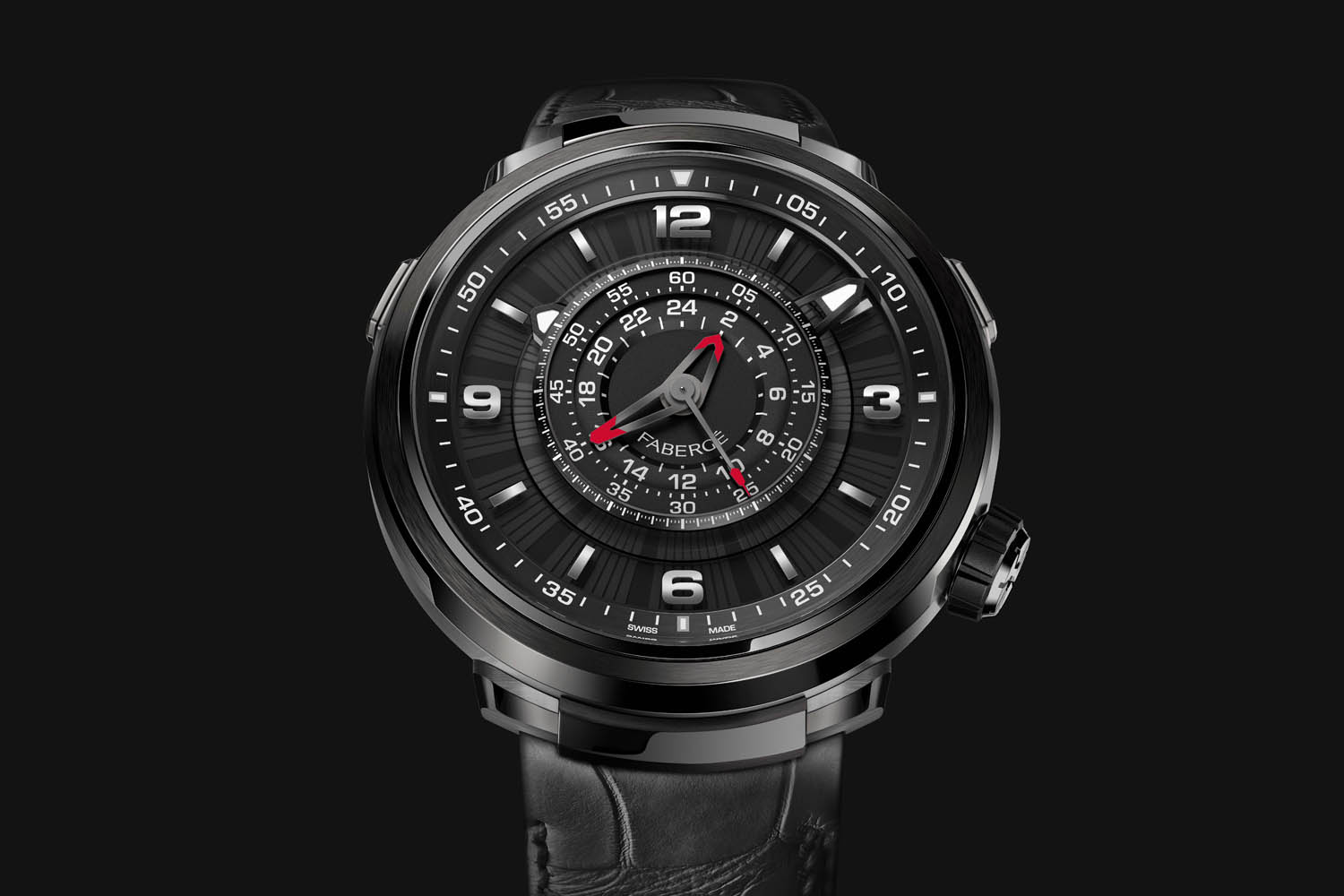
When you think Fabergé, you hardly think about watches. And even more, you hardly imagine a hyper-innovative chronograph movement, which in some ways revolutionizes centuries of stop watches… However that is exactly what Fabergé introduces today: a movement with a brand new display, a brand new architecture and a brand new clutch, solving many of the traditional chronograph issues. Fabergé’s new timepieces is a chronograph that displays the elapsed hours, minutes and seconds centrally, with the passage of ‘normal’ hours and minutes around it. Please welcome the Fabergé Visionnaire Chronograph, with revolutionary movement by Agenhor (and we found the best possible video to explain it – thanks TheWatchesTV.)
The Fabergé Visionnaire Chronograph as a watch
Without degrading all other chronographs, it must be said that legibility of the new Fabergé Visionnaire Chronograph beats most, not every (!!), other chronograph. The reason for this is the way the elapsed time is displayed. On most other chronographs the recorded time is displayed in small sub dials and let’s be honest, these are not always easy to read. Especially when you’re measuring time and have to read the elapsed time quickly. In comes the new Fabergé Visionnaire Chronograph that displays elapsed time by means of a centrally positioned hour, minute and second chronograph hand. Surrounding the chronograph, is the indication of ‘normal’ time by means of an hour and minute hand.
The case measures 43mm in diameter and comes with a novel sort of integrated lugs. We’ll report about this as soon as we have had our hands-on time at Baselworld, in two weeks from today. On the press photos the watch looks good, very well designed, but as said, we’ll certainly cover this with hands-on photos. The Fabergé Visionnaire Chronograph will be available in two editions, one combining rose gold and titanium, and one in black DLC-coated titanium and black ceramic.
The Display Fabergé Visionnaire Chronograph
The dial of the Fabergé Visionnaire Chronograph features two distinct areas, each with its own distinct function. The time is indicated on the periphery, surrounding the chronograph indications that are displayed in the center. The hour and minute hands are not affixed on a central axis but rotating on a peripheral axle. The space in the centre is used by the chronograph indication, which are very easy to read, from the inside out: a 24-hour hand, a 60-minute hand and a second hand.
Although some other website state that this is the world’s first chronograph with central chronograph hands, this isn’t true. In the last decades of the previous century, for instance the Lemania 5100, widely used during the 1970s. There were also some Girard-Perregaux chronographs with a Dubois-Depraz module, which also also displayed elapsed time by means of a central second and minute hand. And of course there was the DeBethune Maxichrono that was introduced in 2014, and also displays elapsed time by means of a central 24-hour, 60-minute, and 60-second hands. This new Fabergé however isn’t the first and only chronograph that displays elapsed time with a central second, minute and hour hand. However it IS the first to display elapsed hours and minutes as jumping hours and minutes, thus provide a very precise reading of elapsed time! Inside ticks a movement that was developed by Jean-Marc Wiederrecht and his team at Agenhor. The development took them some 8 years and the result is a modular movement, with central chronograph module, called AgenGraph. Its entire architecture is a superb technical feat that is jaw-dropping cool!
The jumping hour and minute indications are even instantaneously jumping, and that’s another feat that demands respects. Now we’ve read the press release, and several other stories about this marvelous new chronograph, and even after reading all that it wasn’t easy for everyone of us to fully comprehend the enormous amount of technical feats of this movement. Better than words, this video from our friends of TheWatchesTV, will explain all intricate details of the AgenGraph movement in a much more simple and visual way than we could have done. This video is the most practical way to understand… (yes, and even team Mono had to watch the video to fully understand every detail)
The novel display of elapsed time was the first impressive feature of the Fabergé Visionnaire Chronograph, however there’s also a lot more. And one thing really stands out, which is the horizontal clutch!
The new horizontal clutch of the AgenGraph
The traditional way in watchmaking, to couple the timekeeping part of a movement to the chronograph part, is the horizontal clutch. A series of gear, held in place by a mobile bridge, moves on an horizontal axis so the wheels of the chronograph and the wheels of the timekeeping part of the movement can couple. However there’s always an issue with this, and it doesn’t matter whether we’re talking about a very expensive hand-finished chronograph or an affordable with run-off-the-mill chronograph calibre like for instance the Valjoux 7750: this creates friction and it requires some time for the teeth of these gears to perfectly mesh. The result is the usual jerk of the second hand, when staring the chronograph. Good thing, there’s also an advantage: it consumes less space and its construction is simply much nicer to look at.
Another way to do couple the chronograph with the rest of the movement, upon actuation of the chronograph, is the vertical clutch. This is for instance used by Rolex in the Daytona, by Montblanc in the Nicolas Rieussec Chronograph and quite a few more. This mechanism connects the wheels on a vertical axle, by moving a series of gears up and down. The result is less friction, and, more importantly, no more jerk (and loss of a fraction of a second) when starting the chronograph. However this construction is visually less appealing and consumes more space, making movements thicker. This is where Agenhor and their new AgenGraph movement, implemented in the Fabergé Visionnaire Chronograph, enter the game.
Now back to that horizontal clutch! Usually the horizontal coupling is done by meshing the teeth of two wheels. So, what if there are no teeth? This is the solution chosen by Agenhor, which uses smooth wheels with no teeth but an abrasive surface to create friction. Because the surface isn’t smooth, the wheels couple the time-keeping and chronograph gear trains, and the wheels do not require any time to connect. They simply touch each other and connection. It sounds simple on paper, yet no one thought about it before. It is brilliant, just brilliant. Once again, the video will definitely help understanding better than these words.
More details on www.faberge.com. And many more details to come during Baselworld, with hands-on images and technical explanations.
We’d like to thank Marc Andre Deschoux and team of TheWatchesTV for letting us use their video. You can find more watchmaking videos on their Youtube Channel here.

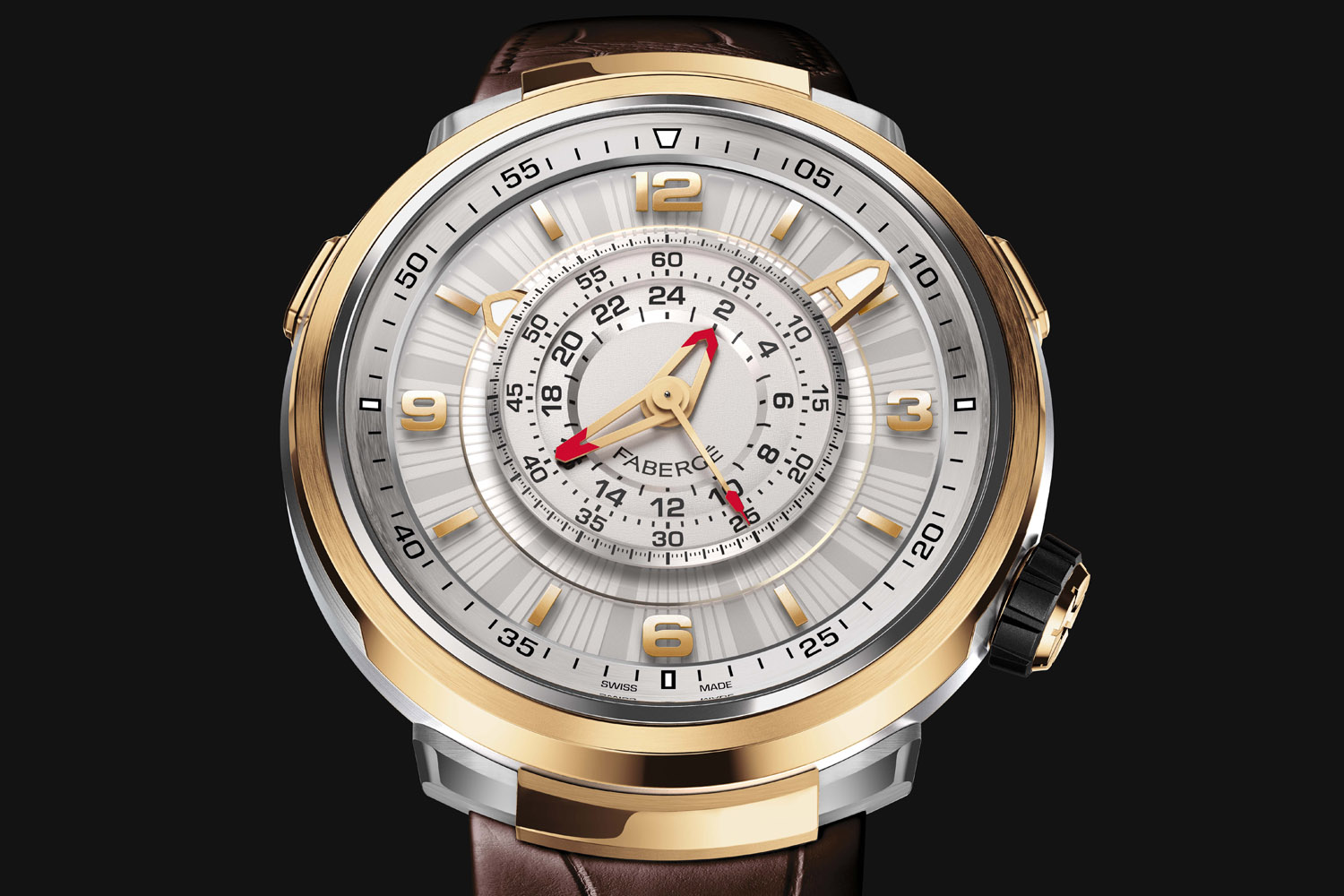
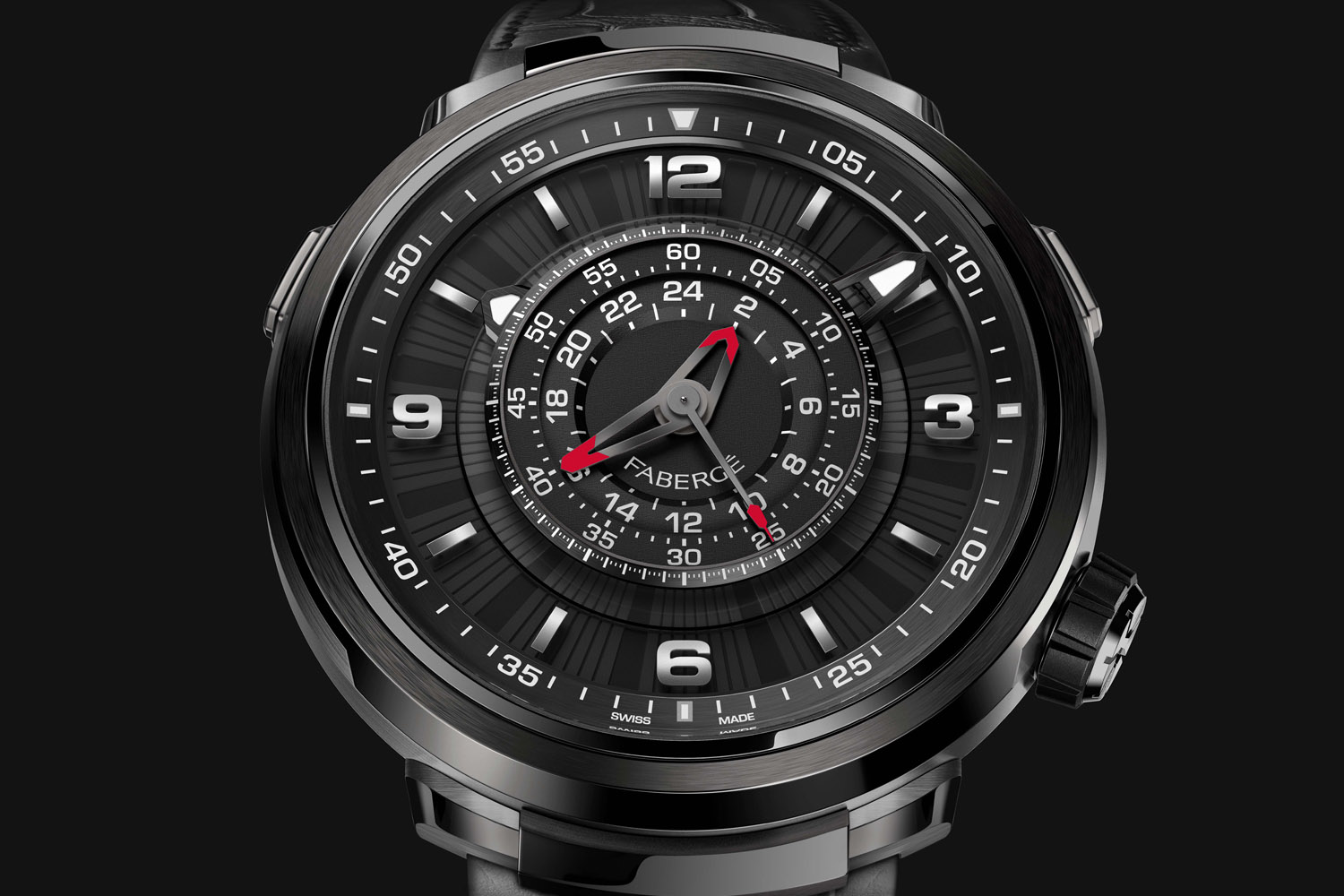
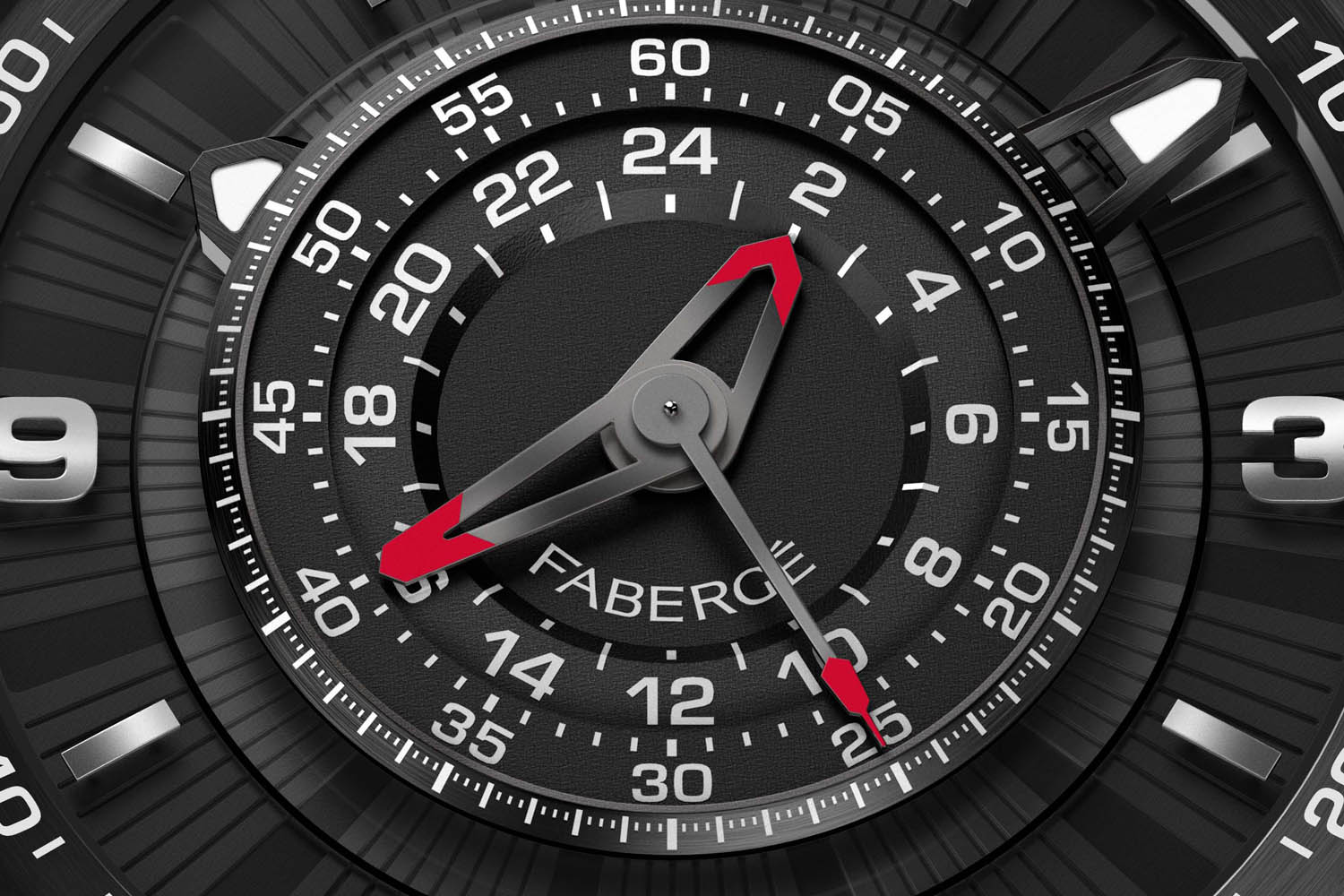
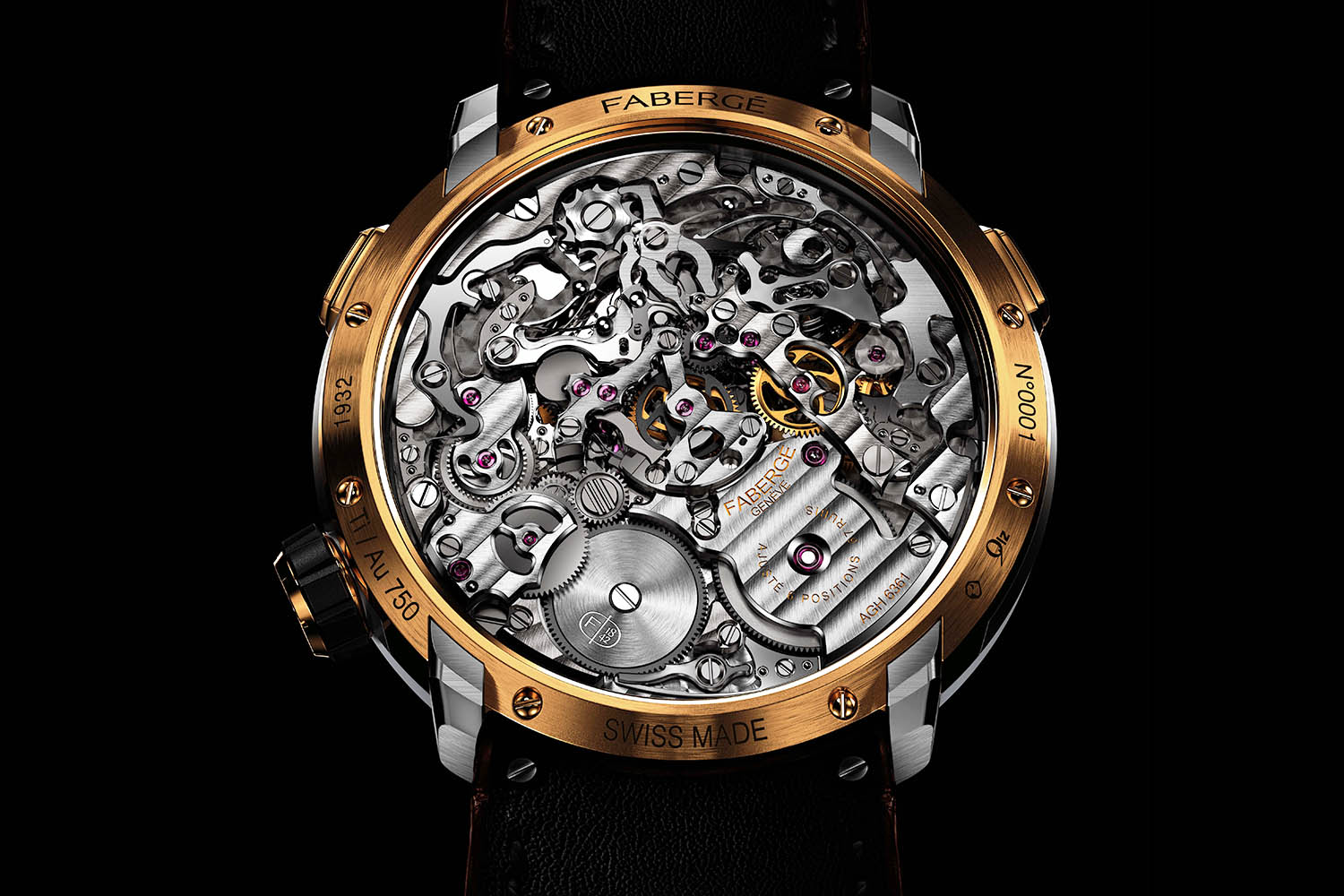
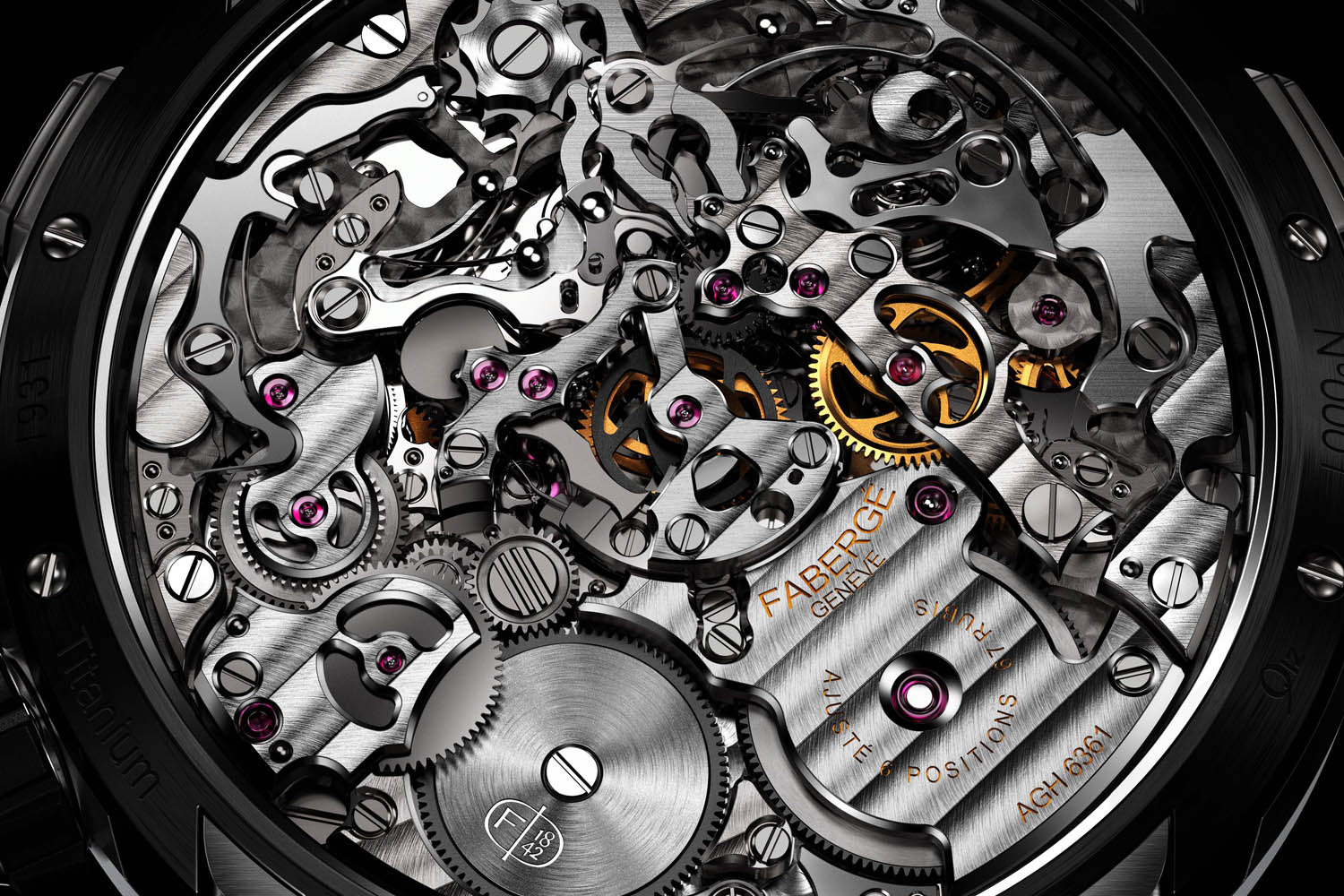



2 responses
Hi Frank,
thanks for sharing this incredibly innovative piece. Honestly I never considered Fabergè as a serious watchmaker, but this changed my mind.
A full center chronograph is simply genial (even if as you said not totally new) especially when coupled with jumping hands that allow for a perfect reading. Only doubt I have is about the real legibility of central dial since the watch is relatively small (43mm).
Should try it on the flesh LOL
Regards
slide68
Good morning Frank,
Thanks for your article and beautiful pictures.
Except the Dial and hands design, what about the DB28 Maxichrono from DE BETHUNE?
Legibility is may be different but the 5 hands were still present during Baselworld 2014 .
Regards.
JMR